Duke Energy and AREVA to jointly develop baseload biomass power plants in the U.S.
Two of the world's largest energy conglomerates, France's AREVA and Duke Energy, yesterday announced at the annual meeting of the Clinton Global Initiative, that they will jointly develop biomass power plants in the United States. The joint venture will be called ADAGE Biopower, which will facilitate the development of biopower plants that will use wood waste and other biomass to produce electricity. The project comes at a time when Americans face soaring energy costs, when climate change is becoming a tangible problem, and when other renewables find it difficult to deliver power in a reliable manner.
The AREVA/Duke agreement is one of the first biomass-to-electricity partnerships in the United States between major energy companies. Biomass is already the largest renewables sector in the EU, but now it seems the green baseload power solution is crossing the pond in earnest (less than a week ago, America's largest cooperative power supplier announced a $1.5 billion investment in biomass).
According to the agreement, AREVA will design and build biomass power plants. Duke Energy Generation Services (DEGS), a commercial power business unit of Duke Energy that owns and develops renewable energy, will manage operations. For each project, ADAGE will negotiate power purchase agreements and fuel contracts, and secure suitable sites. Hence, ADAGE will provide customers a fully integrated solution.
 energy :: sustainability :: biomass :: bioenergy :: renewables :: power plants :: climate change :: energy security :: baseload ::
energy :: sustainability :: biomass :: bioenergy :: renewables :: power plants :: climate change :: energy security :: baseload ::
ADAGE will be headquartered in Chadds Ford, Pa. near Philadelphia. The environmental commitments outlined in the ADAGE strategic plan were featured at the Clinton Global Initiative 2008 Annual Meeting in New York.
AREVA is the leading U.S. nuclear vendor and a key player in the electricity transmission and distribution sector. AREVA Inc.'s 5,300 U.S. energy employees are committed to serving the nation and paving the way for the future of the electricity market. With 45 locations across the American nation and nearly $2 billion in energy revenues in 2007, AREVA Inc., through its subsidiaries, combines access to worldwide expertise and a proven track record of performance. In the U.S. and in more than 100 countries around the world, AREVA is engaged in the 21st century's greatest challenges: making energy available to all, protecting the planet, and acting responsibly toward future generations. AREVA Inc. is headquartered in Bethesda, Maryland.
Duke Energy, one of the largest electric power companies in the United States, supplies and delivers electricity to approximately 4 million U.S. customers in its regulated jurisdictions. The company has approximately 35,000 megawatts of electric generating capacity in the Midwest and the Carolinas, and natural gas distribution services in Ohio and Kentucky. In addition, Duke Energy has more than 4,000 megawatts of electric generation in Latin America, and is a joint-venture partner in a U.S. real estate company. Headquartered in Charlotte, N.C., Duke Energy is a Fortune 500 company traded on the New York Stock Exchange under the symbol DUK.
References:
ADAGE Biopower: Renewables: AREVA, Duke Energy to Jointly Develop Biomass Power Plants in the United States - September 24, 2008.
Article continues
The AREVA/Duke agreement is one of the first biomass-to-electricity partnerships in the United States between major energy companies. Biomass is already the largest renewables sector in the EU, but now it seems the green baseload power solution is crossing the pond in earnest (less than a week ago, America's largest cooperative power supplier announced a $1.5 billion investment in biomass).
According to the agreement, AREVA will design and build biomass power plants. Duke Energy Generation Services (DEGS), a commercial power business unit of Duke Energy that owns and develops renewable energy, will manage operations. For each project, ADAGE will negotiate power purchase agreements and fuel contracts, and secure suitable sites. Hence, ADAGE will provide customers a fully integrated solution.
This project comes at exactly the right time as Americans face soaring energy prices and look to meet rising electricity demand with green energy sources. The ADAGE biopower facilities will respond to our nation's need for new baseload energy alternatives. - Jim Rogers, Duke Energy CEOAREVA is developing a 50 megawatt (MW) design for ADAGE, with the intent of maximizing standardization wherever possible and take advantage of a fleet approach. A 50 MW ADAGE biomass plant would provide electricity for approximately 40,000 households and would avoid 400,000 tons of carbon dioxide (CO2) emissions per year compared to coal.
AREVA has extensive experience in the biomass sector, having designed and built more than 100 biopower facilities in Europe, Asia and South America with capacity of more than 2,500 megawatts. We are delighted to partner with Duke Energy, which has a growing portfolio of renewable assets throughout the U.S. market, and tremendous experience in operating power plants. - Anne Lauvergeon, CEO of AREVAAccording to the companies, biopower has great potential in the United States. Federal and state environmental agencies consider biopower carbon neutral, a significant advantage over traditional power facilities. The impact of biopower facilities on America's economy is just as important; these facilities will create hundreds of new, green-collar jobs. In addition, the utilization of biomass as an abundant domestic resource reduces America's reliance on imported fuels.
Based on the strengths and experiences of Duke Energy and AREVA, ADAGE is well positioned to win a significant portion of the rapidly expanding U.S. biomass market. Biomass provides an alternative baseload power source for states concerned with CO2 emissions. We are committed to partnering with fuel suppliers, power companies and state and local communities to develop mutually beneficial projects. - Reed Wills, President of ADAGEThe U.S. Energy Information Administration (EIA) estimates the total installed capacity of wood biomass power generation to be 6,000 megawatts. EIA and several energy consulting firms predict that this figure may double over the next 10 years:
 energy :: sustainability :: biomass :: bioenergy :: renewables :: power plants :: climate change :: energy security :: baseload ::
energy :: sustainability :: biomass :: bioenergy :: renewables :: power plants :: climate change :: energy security :: baseload :: ADAGE will be headquartered in Chadds Ford, Pa. near Philadelphia. The environmental commitments outlined in the ADAGE strategic plan were featured at the Clinton Global Initiative 2008 Annual Meeting in New York.
AREVA is the leading U.S. nuclear vendor and a key player in the electricity transmission and distribution sector. AREVA Inc.'s 5,300 U.S. energy employees are committed to serving the nation and paving the way for the future of the electricity market. With 45 locations across the American nation and nearly $2 billion in energy revenues in 2007, AREVA Inc., through its subsidiaries, combines access to worldwide expertise and a proven track record of performance. In the U.S. and in more than 100 countries around the world, AREVA is engaged in the 21st century's greatest challenges: making energy available to all, protecting the planet, and acting responsibly toward future generations. AREVA Inc. is headquartered in Bethesda, Maryland.
Duke Energy, one of the largest electric power companies in the United States, supplies and delivers electricity to approximately 4 million U.S. customers in its regulated jurisdictions. The company has approximately 35,000 megawatts of electric generating capacity in the Midwest and the Carolinas, and natural gas distribution services in Ohio and Kentucky. In addition, Duke Energy has more than 4,000 megawatts of electric generation in Latin America, and is a joint-venture partner in a U.S. real estate company. Headquartered in Charlotte, N.C., Duke Energy is a Fortune 500 company traded on the New York Stock Exchange under the symbol DUK.
References:
ADAGE Biopower: Renewables: AREVA, Duke Energy to Jointly Develop Biomass Power Plants in the United States - September 24, 2008.
Article continues
 --------------
--------------
 Mongabay, a leading resource for news and perspectives on environmental and conservation issues related to the tropics, has launched Tropical Conservation Science - a new, open access academic e-journal. It will cover a wide variety of scientific and social studies on tropical ecosystems, their biodiversity and the threats posed to them.
Mongabay, a leading resource for news and perspectives on environmental and conservation issues related to the tropics, has launched Tropical Conservation Science - a new, open access academic e-journal. It will cover a wide variety of scientific and social studies on tropical ecosystems, their biodiversity and the threats posed to them.


 A new, landmark study on the impact of an emerging global "green economy" on the world of work says efforts to tackle climate change could result in the creation of millions of new "green jobs" in the coming decades. The new report entitled
A new, landmark study on the impact of an emerging global "green economy" on the world of work says efforts to tackle climate change could result in the creation of millions of new "green jobs" in the coming decades. The new report entitled 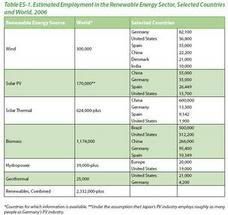
 We have often referred to the agricultural potential of the world's poorest country, the Democratic Republic of Congo (DRC). The tragic contradiction is that this nation has the highest rate of undernourished and hungry people on the planet (70% of all Congolese), while at the same time it has the natural resources to become a major world food producer and exporter. In an interview with Reuters, the director of the
We have often referred to the agricultural potential of the world's poorest country, the Democratic Republic of Congo (DRC). The tragic contradiction is that this nation has the highest rate of undernourished and hungry people on the planet (70% of all Congolese), while at the same time it has the natural resources to become a major world food producer and exporter. In an interview with Reuters, the director of the 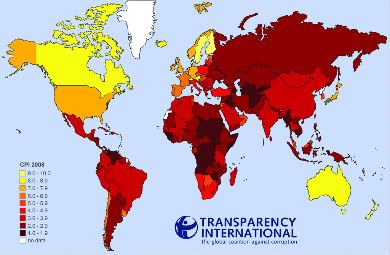
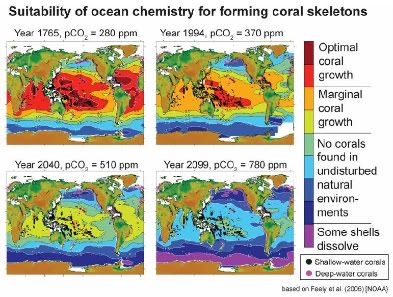
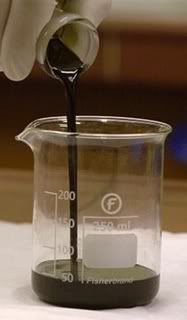
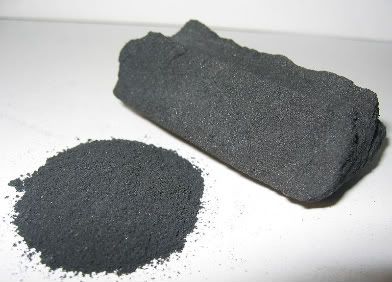







Friday, September 26, 2008
Global Carbon Budget: atmospheric CO2 level increasing more rapidly than anticipated
After decades of improvements, the carbon intensity of the global economy, the carbon emitted per unit of Gross Domestic Product (GDP), was stalled during the period 2003-2005. This change was largely caused by China’s rapidly growing share in economic output and carbon emissions. Since 2005 China’s energy intensity (which underpins carbon intensity) has decreased (improved) by 1.2% in 2006 and 3.7% in 2007 compared to 2005 levels (according to the National Energy Administration in China).
The global oceanic CO2 sink removed 25% of all CO2 emissions for the period 2000-2007, equivalent to an average of 2.3 PgC per year. The size of the CO2 sink in 2007 was similar to that in the previous year but lower by 0.1 PgC compared to its expected increase from atmospheric CO2 growth. This was due to the presence of a La Nina event in the equatorial Pacific. The Southern Ocean CO2 sink was higher in 2007 compared to 2006, consistent with the relatively weak winds and the low Southern Annular Mode (a circumpolar pressure oscillation between Antarctica and southern mid-latitudes). An analysis of the long term trend of the ocean sink shows a slower growth than expected of the CO2 sink over the last 20 years.
Natural Forest Sink
Terrestrial CO2 sinks removed 29% of all anthropogenic emissions for the period 2000-2007, equivalent to an average of 2.6 PgC per year. Terrestrial ecosystems removed 2.9 PgC in 2007, down from 3.6 Pg in 2006, largely showing the high year-to-year variability of the sink. An analysis of the long term trend of the terrestrial sink shows a growing size of the CO2 sink over the last 50 years.
Conclusion
Anthropogenic CO2 emissions have been growing about four times faster since 2000 than during the previous decade, and despite efforts to curb emissions in a number of countries which are signatories of the Kyoto Protocol. Emissions from the combustion of fossil fuel and land use change reached the mark of 10 billion tones of carbon in 2007. Natural CO2 sinks are growing, but more slowly than atmospheric CO2, which has been growing at 2 ppm per year since 2000. This is 33% faster than during the previous 20 years. All of these changes characterize a carbon cycle that is generating stronger climate forcing and sooner than expected.
The Global Carbon Budget is the result of an international collaboration through the Global Carbon Project by Corinne Le Quéré (University of East Anglia/British Antarctic Survey, UK); Mike Raupach (CSIRO, Australia); Philippe Ciais (Commissariat a L'Energie Atomique, France); Thomas Conway (NOOA, USA); Chris Field (Carnegie Institution of Washington, USA); Skee Houghton (Woods Hole Research Center, USA); Gregg Marland (Carbon Dioxide Information Analysis Center, USA); Pep Canadell (CSIRO, Australia).
References:
Global Carbon Project: Carbon Budget 2007 [*.pdf] - September 26, 2008.
Article continues
posted by Biopact team at 12:54 PM 1 comments links to this post
